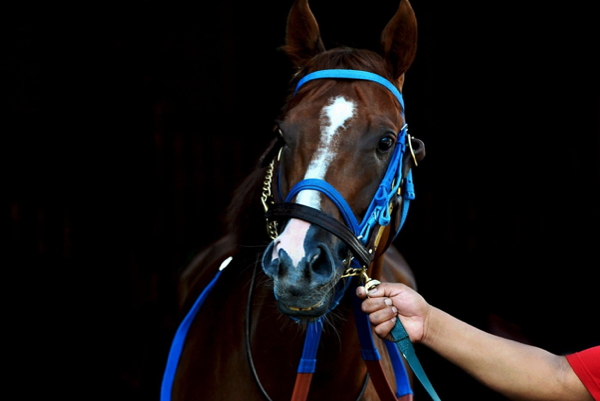 |
RacingBetter News |
| Saturday 5th August 2023 | |
5 Common Horse Racing Injuries To Be Aware Of

Racehorse injuries are one of the most significant factors affecting race outcomes. It's one of the things that experts are watching out for at every start of the race. One great example of this is Forte during the 2023 Kentucky Derby. He was the strong favorite to win the race but was unfortunately scratched off due to a bruise on his foot.
If you aren't aware of the common injuries that could happen to your favorite horse in a race, then you might want to check these injuries out below. It will give you an idea of what to look for when examining your horses before you place your wager.
Digital Flexor Tendon Lesions
The first common horse racing injury you must watch out for is the digital flexor tendon lesions. Although many possible injuries could occur on the racehorse's tendons, this particular injury is the most common.
A study mentioned that superficial digital flexor tendon lesions are a common career-ending injury for racehorses. It means this isn't an injury that should be taken lightly, as a racehorse could retire too soon if they suffer from this kind of injury.
Digital flexor tendon lesions occur when the horse's superficial digital flexor tendon is overloaded due to various factors. These factors could be overperformance in training and competition and direct trauma caused by paddock accidents.
Sore Muscles
Similar to humans, sore muscles are also a common occurrence in horses. Horses work hard to be better at racing. It means they train and exercise as much as possible before every race. As a result, horses experience sore muscles that could affect their equine performances.
Aside from decreased performance, horses with sore muscles are reluctant to be ridden. They will also refuse to exercise or train. These are the clear indications that a racehorse is suffering from sore muscles.
You might be thinking, how do odds work in horse racing? This common question often gets more complicated with injuries. A favorite horse in a specific race suffering from the simplest injury, like a sore muscle, could experience a dramatic decrease in betting odds.
Joint Injuries
Joint injuries are another common occurrence that active participating racehorses often suffer from. Injuries to the racehorse's joints aren't only caused by running during the competition but can also be acquired during training.
The most common type of joint injury you'll encounter in horse racing are inflamed joints and arthritis. Joint inflammation can easily be noticed as the horse shows stiffness and soreness.
Horses that are suffering from joint injuries must be given time to rest. Resting is an effective way to help the joints recover in time for the next scheduled race of the horse. Inflamed joints, for example, will require the horse to rest for 7 to 10 days without running. However, some horses might need more time to recover completely.
Bone Bruises
Another common type of injury seen on racehorses is bone bruises. In general, bone bruising is caused by constant trauma to the bone during its developmental stage. It results in an injury affecting the horse's subchondral bone. The subchondral bone is the layer of bone that adjoins the cartilage in weight-bearing joints.
This injury is commonly reported in both standardbred and thoroughbreds due to their high-intensity training. Moreover, young horses are more susceptible to acquiring bone bruises because their bones are still developing.
Additionally, it's vital that once the injury is detected, it must be taken care of immediately to prevent it from progressing. Failure to prevent the injury during its early stage can affect the horse's overall performance.
Suspensory Ligament Damage
Suspensory ligament damage is a common injury that is more frequent on standard, dressage, and endurance horses. The reason behind this is that this injury occurs when a horse lands awkwardly on a bad ground.
Aside from jumping, suspensory ligament damage can also happen due to fatigue and speed. The damage to the horse's suspensory ligaments can be difficult to diagnose, and there is no perfect formula to help the horse recover.
This kind of injury can highly affect eventers and jumpers since speed and jumping are one of the leading causes of suspensory ligament damage. Once the horse manifests symptoms of the said injury, such as lameness and a leg that's warm, swollen, and sensitive to touch, it's best to call the horse's veterinarian for a local nerve block and hands-on examination.
An ultrasound is also an effective way to find the exact location of the damage and reveal its extent. An X-ray might also be necessary to know if a bone is involved.
Once the vet confirms the diagnosis, the horse must rest so that the ligament will heal properly. It includes stopping training and competitions, hand-walking, regular therapy sessions, and gradually returning to exercise after a few months of rest. Therefore, expect a horse diagnosed with suspensory ligament damage will be instantly removed from a race.
Closing Thoughts
Note that every injury, big or small, significantly impacts the horse's chance of winning. That's why you must check for any injuries your favorite horse might be suffering to know what to expect during the race.
Knowing the common injuries a racehorse can encounter will help you know how these injuries happen and how they affect your favorite horse. As a result, you'll be able to plan your bets accordingly.







